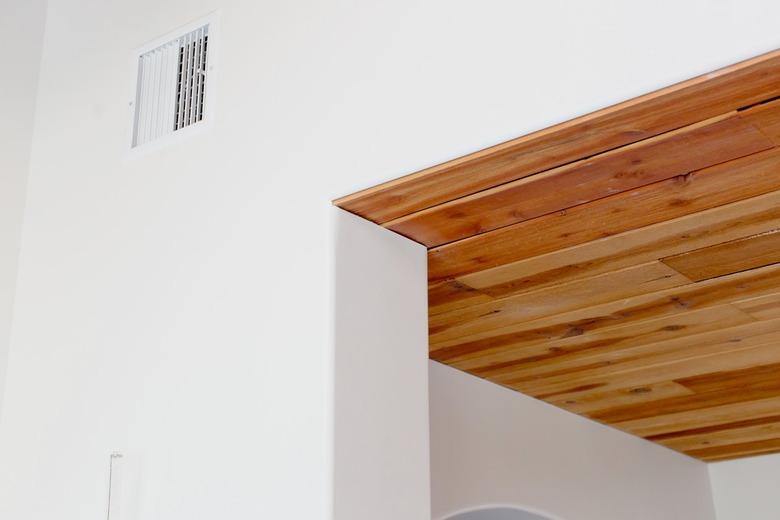How To Get Rid Of A Wasp Nest Inside Of A Wall
Things Needed
-
Caulk
-
Drill
-
Wasp pesticide (powder form)
-
Hammer
-
Pry bar
-
Garbage bag
When wasps decide to take up residence inside of a wall, it can result in one of the most difficult types of nests to remove because it will be difficult to reach. For those allergic to stings or without a certain amount of do-it-yourself know-how, the best thing to do might be to call a professional. For those willing to give it a try, the process can be long and difficult.
Immediate Removal
Step 1
Pinpoint the location of the wasp nest and determine where the insects are getting into the nest from the outside. Observe their flight patterns and pay attention to where they disappear into the wall.
Step 2
Seal off any entrances or exits into the area of the wall where the wasp nest is located. Use caulk or a similar sealant. This will not only prevent wasps from escaping a pesticide application only to return later, but it will also keep the wasps from exiting the nest by another hole to attack or to flee into other parts of the home, garage and attic while the treatment is being applied.
Step 3
Hang a lure trap near the area where the wasp nest is located. This will begin to attract wasps from the colony, and the fewer wasps that are present when the pesticide is applied, the better.
Step 4
Drill a single hole in the wall where the nest is located. This hole should be big enough to fit the applicator end of the pesticide powder, but no bigger.
Step 5
Insert the applicator end of the pesticide into the hole. Most powder pesticides such as insecticidal dusts will have an applicator for inserting into a small area, and will release a puff of dust when squeezed.
Step 6
Repeat as needed. This may take several applications before all wasps are destroyed.
Step 7
Decide what to do with the nest. In some areas, it may be possible to remove a few interior wall boards and scrape the nest free into a garbage bag for removal Be careful in case of surviving wasps. This is generally not recommended, however, as it can be destructive, dangerous and unnecessary. Instead, sealing all of the entry points to the nest will be enough to discourage other colonies from moving in.
Waiting for Fall
Step 1
Determine the urgency with which the nest needs to be removed. If it is already late in the summer, the colony will be at its largest and most dangerous. With the fall weather and cold temperatures, the wasps will begin to die on their own. If at all possible, wait until the wasp colony dies naturally.
Step 2
Seal off all the entry points into the nest. This is enough to prevent wasps from moving back into the nest, but this should not be done until you are certain that there are no more insects left, as they can be forced out of the wall through other points if sealed too early.
Step 3
Take preventative measures. Preventing another wasp colony from building a nest inside the wall is much easier than removing it. Seal any openings between shingles and siding, and be sure any sweet, sugary foods — especially those consumed outdoors — are not left in a place where they are easily accessible to pests.
Tip
Always wait until evening to work around a wasp nest. They will be less active during this time and more vulnerable to the effects of the spray, as more will be in the nest as opposed to out foraging.
Always wear protective clothing such as long-sleeved shirt, pants, work gloves and eye protection.
Warning
Attempting to kill wasps and remove the nest in an enclosed space such as inside a wall can be very dangerous. If there is any doubt, call a professional to do it.
Some people are severely allergic to wasp stings, so be prepared and make sure family members know what is going on in case of emergency.
